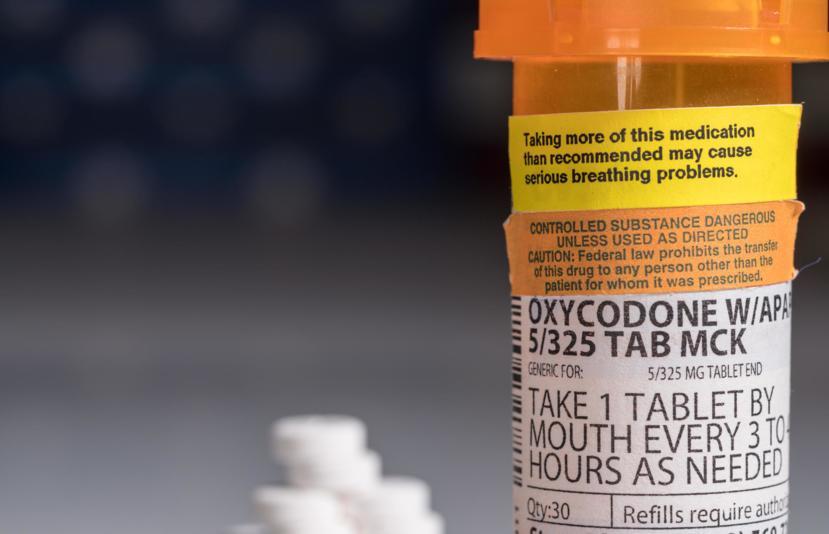Unpleasant Truths About Opioids

Dr. Richard Soper is an Addiction Psychiatrist practicing in Nashville, TN. Dr. Soper evaluates, diagnoses, and treats people who suffer from impulse control conditions related to addiction. As an Addiction Psychiatrist, Dr. Soper is a substance abuse expert, and is trained to fully understand the biological science... more
Over the past few years, I've lost track of how many times the opioid epidemic has, in one way or another (Prince, Fentanyl; Tom Petty, Naltexone and Buprenorphine), found its way onto the front page news. What distinguishes this epidemic is not only its catastrophic toll—with hundreds of thousands dead, uncountable millions harmed—but also the fact that, unlike SARS, Ebola or influenza, this epidemic has no end in sight. The "why" is complicated, but it's mainly because of the role these drugs play in medical practice.
This is the greatest drug safety crisis of our time. Addressing it involves facing some unpleasant truths and asking some difficult questions.
One fact is that well-intentioned prescriptions have fueled the crises. For 20+ years now, physicians, nurses and other health professionals, have prescribed opioids—drugs like Oxycodone, Hydromorphone, Fentanyl and others—liberally for chronic pain, one of the most common problems we see. We did this because the relief of suffering is our primary goal, because we are conditioned to intervene, and because we were assured on some authority that the practice was safe, effective and based on sound medical evidence.
It's not.
Despite the best of intentions, we flooded North American homes with opioids purer and often stronger than heroin. These drugs increasingly fell into the wrong hands, destroying young lives and countless families in the process. But another unfortunate truth is that even when patients with chronic pain followed our instructions, we caused more harm than we anticipated.
As pain resurfaces, doses are often increased, and the cycle continues
By some estimates, 12-15 percent of patients spiraled into addiction, even though we'd been told this would happen only rarely. Some have had secondary tragedies, vehicle accidents, missed work or school, etc. Others fell, fracturing bones or sustaining head injuries. And some, especially those prescribed high doses or who took their medication with sedatives or alcohol, simply went to sleep and didn't wake up.
And yet we continue the practice. The "why" here is more complicated—we've grown accustomed to it, writing a prescription is easy, pills are expected, they're covered by insurance while other treatments aren't, and so on. But a critical factor is that our patients often tell us opioids work, that they need them to function, and that they couldn't imagine facing life without them. These anecdotes, delivered honestly and with conviction, are powerful. Recently several states, including Tennessee, have passed legislation restricting the quantity of opioids that can be prescribed. Every state in the US now has a databank accessible by computer that doctors are required to check on any patient prior to prescribing an opiate.
To openly question the role of opioids in the treatment of chronic pain is to draw the ire of patients and, sometimes, the displeasure of colleagues, particularly those who specialize in pain medicine. But it is long past time that doctors (and patients) reflect on what happens when these drugs are prescribed for months or years at a time, and on what the honest objectives of drug therapy should be.
It's true that opioids relieve pain. This is why they can be valuable after a fracture or major operation. But it's also true that analgesia wanes with time, a phenomenon known as tolerance.
As pain resurfaces, doses are often increased, and the cycle continues. An even more pernicious phenomenon is physical dependence which develops within days and results in withdrawal symptoms (including pain, abdominal cramping, irritability and drug craving) when opioids are stopped. Patients quickly learn that these symptoms abate when the drug is resumed. Is it any wonder that a patient with chronic pain would construe this as effectiveness? Of course not, and it's a recipe for self-perpetuating therapy. The goal of pain medication isn't simply pain relief—the goal is to help more than harm.
Let's reflect for a moment on why healthcare professionals prescribe medications. The goal is always to afford benefits in excess of harms. Regardless of drug or patient, a benefit is never guaranteed and harms always loom. This is why we don't prescribe antibiotics for the common cold. Yes, the risk is low, but there is no conceivable benefit because viruses don't respond to antibiotics. This is an easy calculus.
But what happens when the benefits of a drug decline with time, yet the harms persist or even increase? What if the benefits come to be defined by avoidance of withdrawal symptoms, including pain itself, thereby clouding the assessment of effectiveness? What if patients reject this concept, as they often do? And what if, unlike most other medications, it isn't possible to simply stop therapy without triggering a cascade of new and very serious problems?
These questions merit reflection by every health professional, primary care of specialist, who treats chronic pain and the patients who suffer from it.
The goal of pain therapy, medication or other, isn't simply pain relief, the goal is to help more than harm. Sometimes chronic opioid therapy meets this objective, but it does so less often than we think. But other effective forms of therapy are also available, such as buprenorphine, acupuncture and marijuana, without the risk of overdose death.








